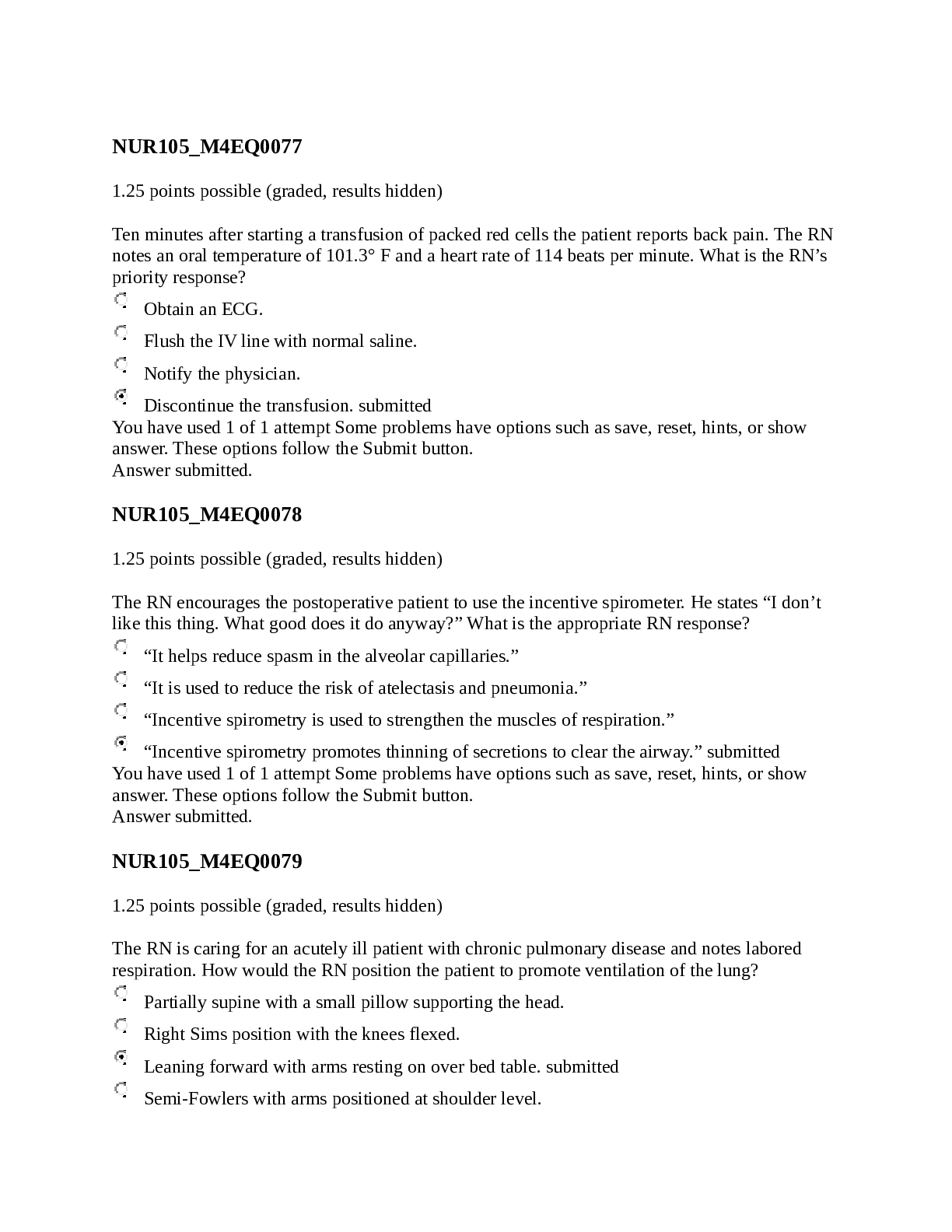Business > EXAM > CFA Level 1 Financial Statement Analysis 44 Questions with Answers,100% CORRECT (All)
CFA Level 1 Financial Statement Analysis 44 Questions with Answers,100% CORRECT
Document Content and Description Below
CFA Level 1 Financial Statement Analysis 44 Questions with Answers Income statement - CORRECT ANSWER A financial statement that provides information about a company's profitability over a stated ... period of time. Also called statement of operations or profit and loss statement. Revenue - Expenses = Net income or loss Liquidity - CORRECT ANSWER The ability to purchase or sell an asset quickly and easily at a price close to fair market value. The ability to meet short-term obligations using assets that are the most readily converted into cash. Solvency - CORRECT ANSWER With respect to financial statement analysis, the ability of a company to fulfill its long-term obligations. Balance sheet - CORRECT ANSWER The financial statement that presents an entity's current financial position by disclosing resources the entity controls (assets) and the claims on those resources (liabilities and equity claims), as of a particular point in time. Also called statement of financial position or statement of financial condition. Assets = Liabilitiees + Owner's Equity Comprehensive income - CORRECT ANSWER The change in equity of a business enterprise during a period from nonowner sources; includes all changes in equity during a period except those resulting from investments by owners and distributions to owners. Net income + other comprehensive income. Other comprehensive income - CORRECT ANSWER Items of comprehensive income that are not reported on the income statement. Comprehensive income - net income. Consolidated basis - CORRECT ANSWER When income statements include the income and expenses of subsidiary companies under the control of the parent (reporting) company. Revenue - CORRECT ANSWER The amount charged for the delivery of goods or services in the ordinary activities of a business over a stated period; the inflows of economic resources to a company over a stated period. Expenses - CORRECT ANSWER Outflows of economic resources or increases in liabilities that result in decreases in equity (other than decreases because of distributions to owners); reductions in net assets associated with the creation of revenues. Assets - CORRECT ANSWER Resources controlled by an enterprise as a result of past events and from which future economic benefits to the enterprise are expected to flow. Liabilities - CORRECT ANSWER Present obligations of an enterprise arising from past events, the settlement of which is expected to result in an outflow of resources embodying economic benefits; creditors' claims on the resources of a company. Owners' equity - CORRECT ANSWER The excess of assets over liabilities; the residual interest of shareholders in the assets of an entity after deducting the entity's liabilities. Also called shareholders' equity. Owners equity = Contributed Capital + retained earnings. Diluted shares - CORRECT ANSWER The number of shares that would be outstanding if all potentially dilutive claims on common shares (e.g., convertible debt, convertible preferred stock, and employee stock options) were exercised. Financial flexibility - CORRECT ANSWER The ability to react and adapt to financial adversities and opportunities. Operating activities - CORRECT ANSWER Activities that are part of the day-to-day business functioning of an entity, such as selling inventory and providing services. Investing activities - CORRECT ANSWER Activities which are associated with the acquisition and disposal of property, plant, and equipment; intangible assets; other long-term assets; and both long-term and short-term investments in the equity and debt (bonds and loans) issued by other companies. Financing activities - CORRECT ANSWER Activities related to obtaining or repaying capital to be used in the business (e.g., equity and long-term debt). Depreciation - CORRECT ANSWER The process of systematically allocating the cost of long-lived (tangible) assets to the periods during which the assets are expected to provide economic benefits. unqualified - CORRECT ANSWER a "clean" audit opinion is said to be qualified - CORRECT ANSWER an audit opinion where there is some scope limitation or exception to accounting standards is a _____________ audit opinion. adverse audit opinion - CORRECT ANSWER an audit opinion issued when financial statements materially depart from accounting standards and are not fairly represented. disclaimer of opinion - CORRECT ANSWER occurs when, for some reason, the auditors are unable to issue an opinion. 1. Articulate the purpose/context of the analysis. 2. Collect data 3. process data 4. Analyze and interpret the processed data. 5. Develop and communicate conclusions/recommendations. 6. Follow up - CORRECT ANSWER What are the six steps to the financial statement analysis framework? Statement of cash flows - CORRECT ANSWER A financial statement that reconciles beginning-of-period and end-of-period balance sheet values of cash; provides information about an entity's cash inflows and cash outflows as they pertain to operating, investing, and financing activities. Measures: Liquidity, solvency, financial flexibility. Retained earnings - CORRECT ANSWER The earnings that are retained by the company. Beginning retained earnings + net income - dividends Assets = Liabilities + Contributed capital + beginning retained earnings + revenue - expenses - dividends - CORRECT ANSWER What is the expanded accounting equation? Statement of retained earnings - CORRECT ANSWER A financial statement that reconciles beginning-of-period and end-of-period balance sheet values of retained income; shows the linkage between the balance sheet and income statement. Double-entry accounting - CORRECT ANSWER The accounting system of recording transactions in which every recorded transaction affects at least two accounts so as to keep the basic accounting equation in balance. Assets Liabilities Owners' equity Revenues Expenses - CORRECT ANSWER What are the 5 elements of financial statements? Non-current assets - CORRECT ANSWER Assets that are expected to benefit the company over an extended period of time (usually more than one year). Current assets - CORRECT ANSWER Assets that are expected to be consumed or converted into cash in the near future, typically one year or less. Also called liquid assets. Account - CORRECT ANSWER With the accounting systems, a formal record of increases and decreases in a specific asset, liability, component of owners' equity, revenue, or expense. Chart of accounts - CORRECT ANSWER A list of accounts used in an entity's accounting system. Contra account - CORRECT ANSWER An account that offsets another account. Inventory - CORRECT ANSWER The unsold units of product on hand. Other receivables - CORRECT ANSWER Amounts owed to the company from parties other than customers. Cash equivalents - CORRECT ANSWER Very liquid short-term investments, usually maturing in 90 days or less. Direct format - CORRECT ANSWER With reference to the cash flow statement, a format for the presentation of the statement in which cash flow from operating activities is shown as operating cash receipts less operating cash disbursements. Indirect format - CORRECT ANSWER With reference to cash flow statements, a format for the presentation of the statement which, in the operating cash flow section, begins with net income then shows additions and subtractions to arrive at operating cash flow. Unearned revenue - CORRECT ANSWER A liability account for money that has been collected for goods or services that have not yet been delivered; payment received in advance of providing a good or service. *Also called deferred revenue Unbilled revenue - CORRECT ANSWER Revenue that has been earned but not yet billed to customers as of the end of an accounting period. *Also called accrued revenue. Prepaid expense - CORRECT ANSWER A normal operating expense that has been paid in advance of when it is due. Accrued expenses - CORRECT ANSWER Liabilities related to expenses that have been incurred but not yet paid as of the end of an accounting period *Also called accrued liabilities. 1. Journal entries and adjusting entries. 2. General ledger and T accounts. 3. Trial Balance and Adjusted Trial Balance. 4. Financial Statements - CORRECT ANSWER What are the four steps in the flow of information through an accounting system? [Show More]
Last updated: 1 year ago
Preview 1 out of 6 pages
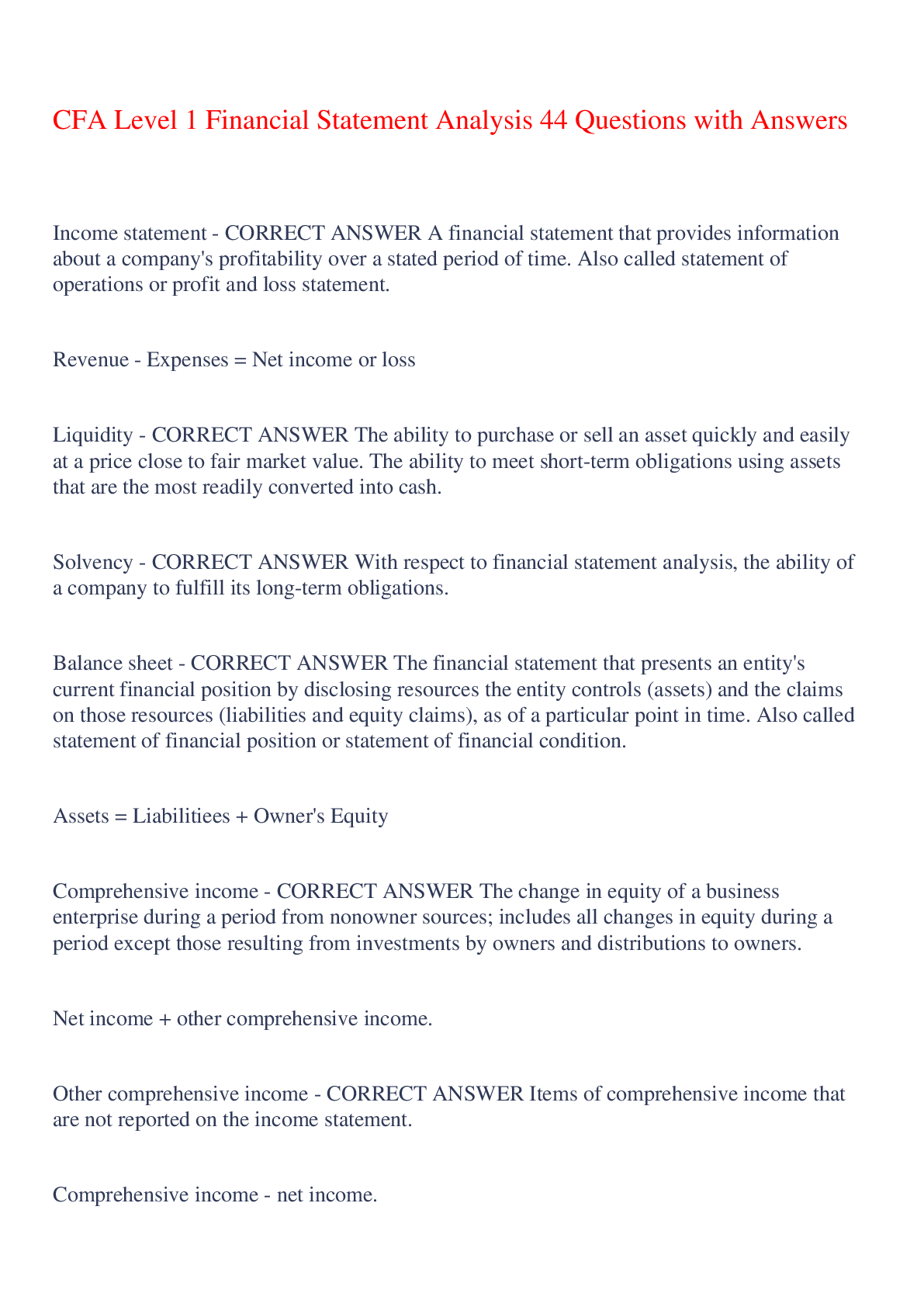
Buy this document to get the full access instantly
Instant Download Access after purchase
Add to cartInstant download
We Accept:

Reviews( 0 )
$8.00
Document information
Connected school, study & course
About the document
Uploaded On
Jun 19, 2023
Number of pages
6
Written in
Additional information
This document has been written for:
Uploaded
Jun 19, 2023
Downloads
0
Views
68














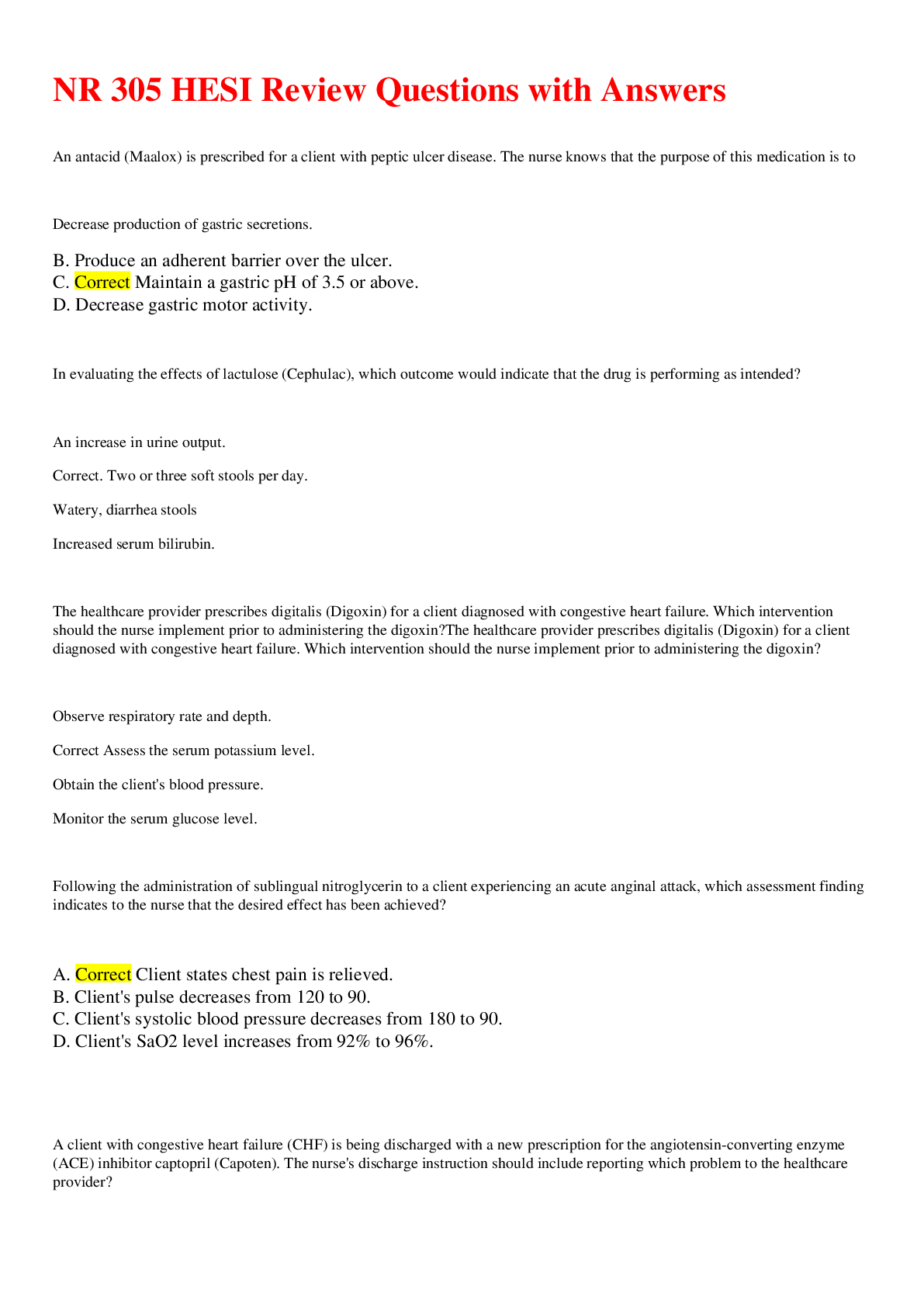
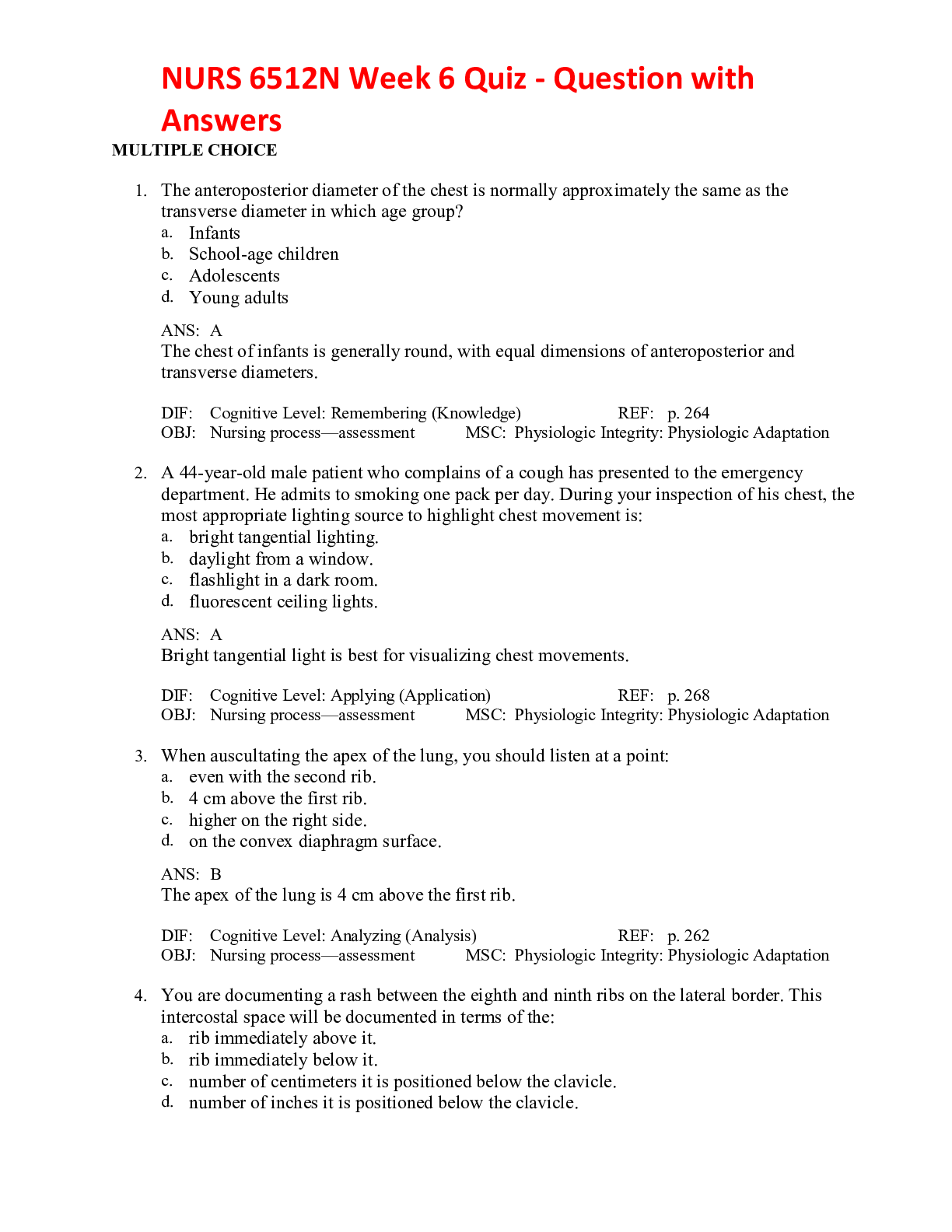
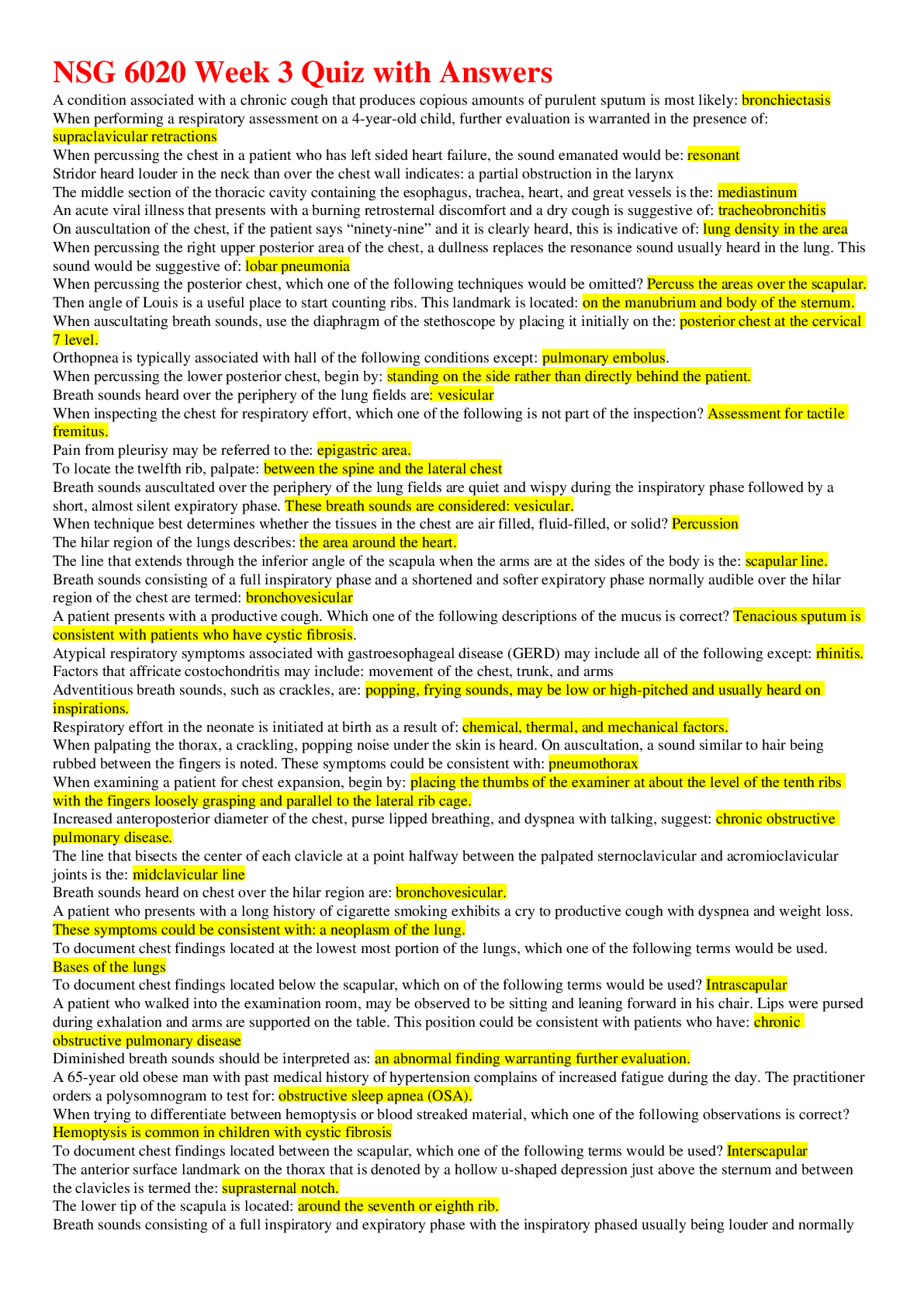
.png)
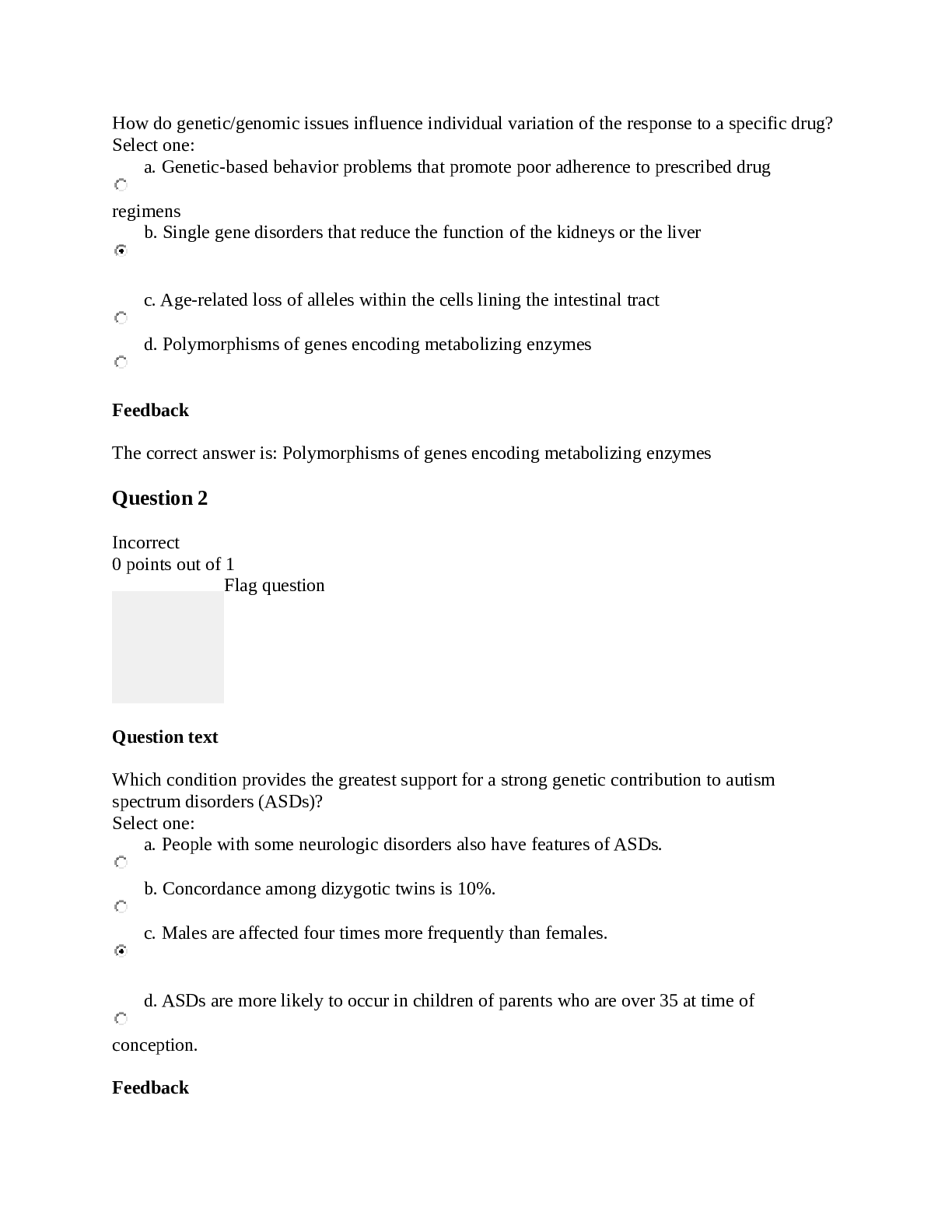

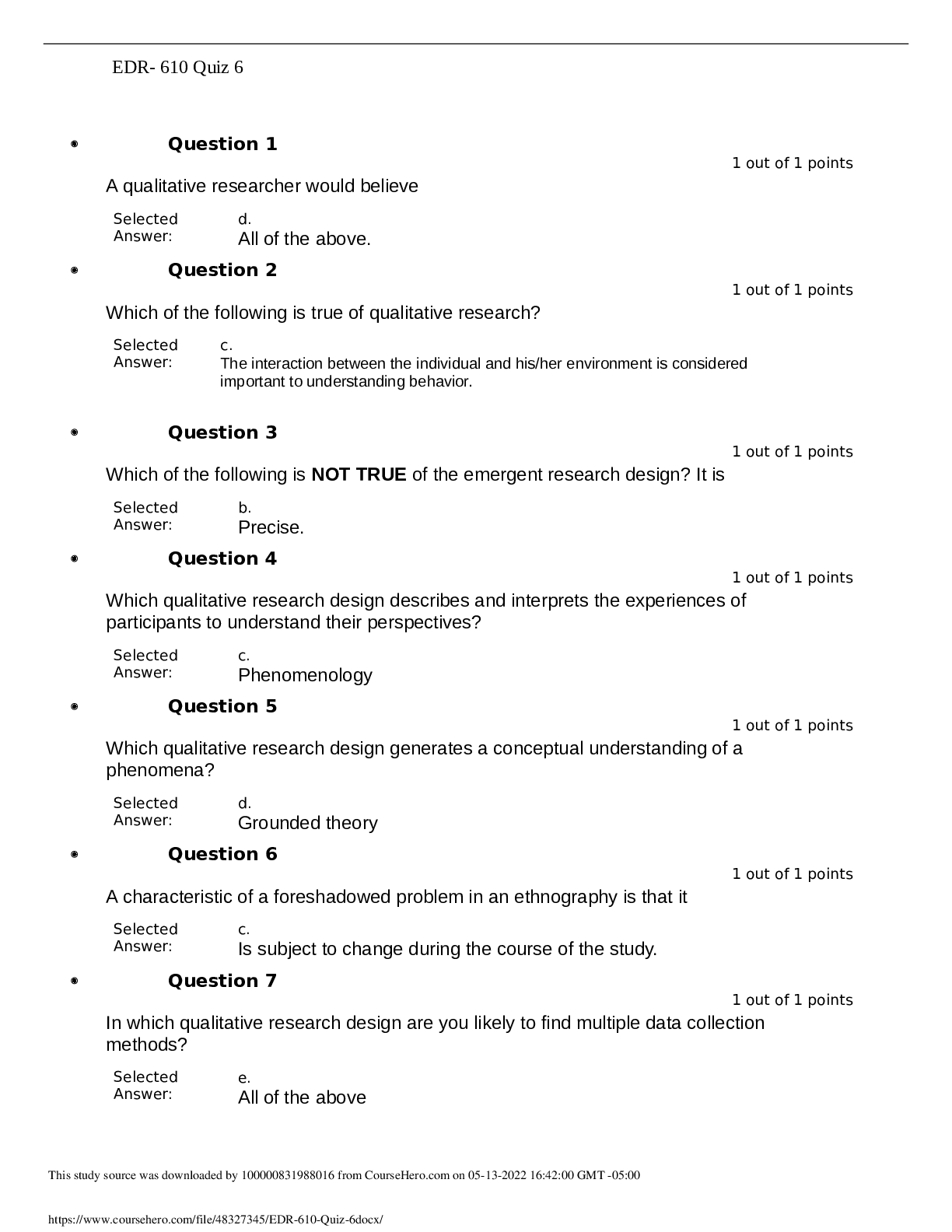

.png)
